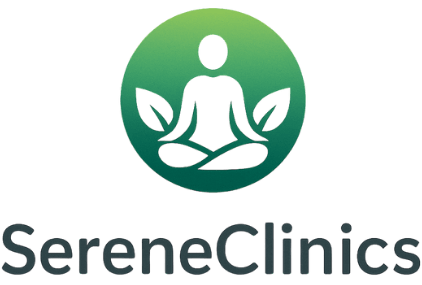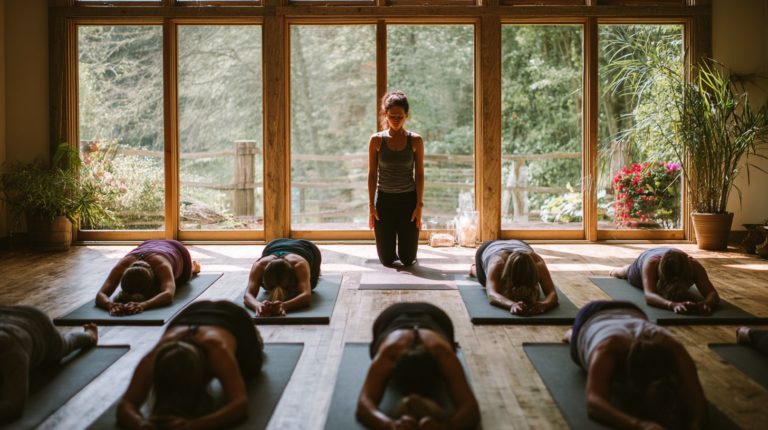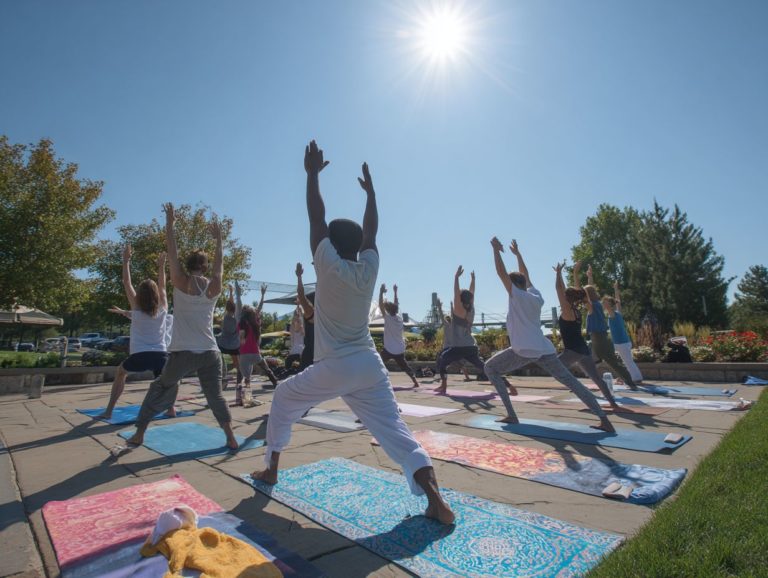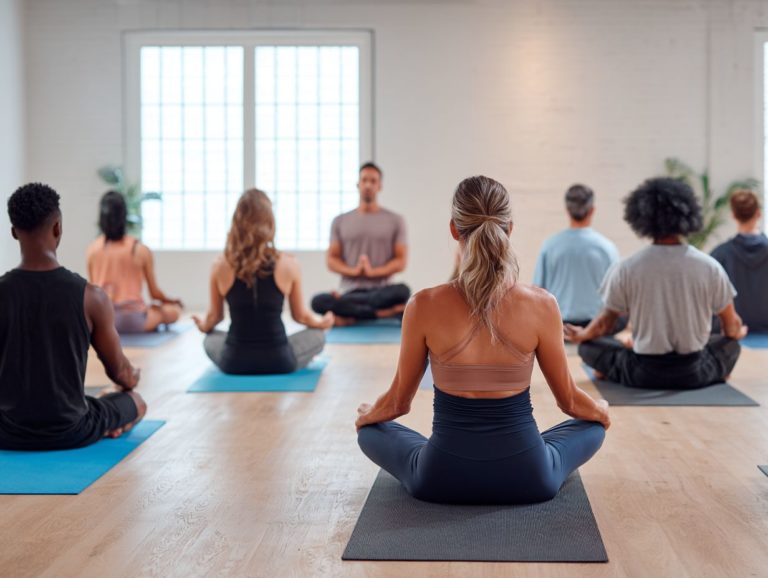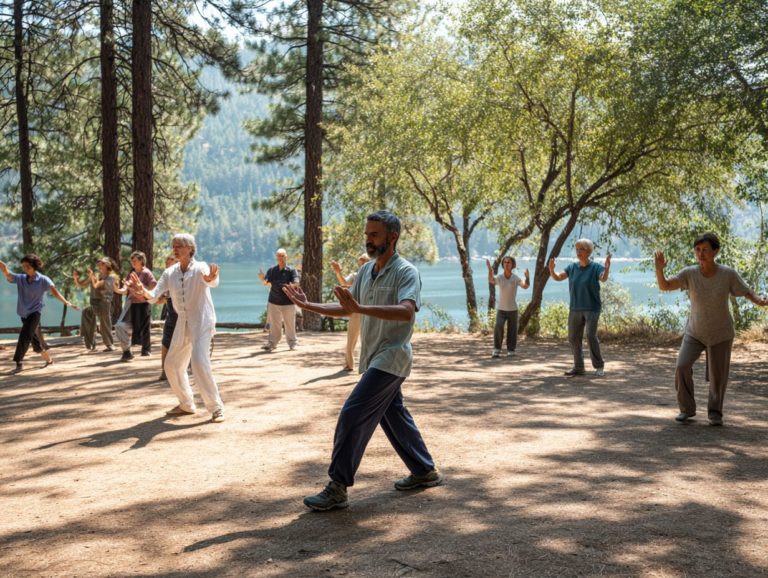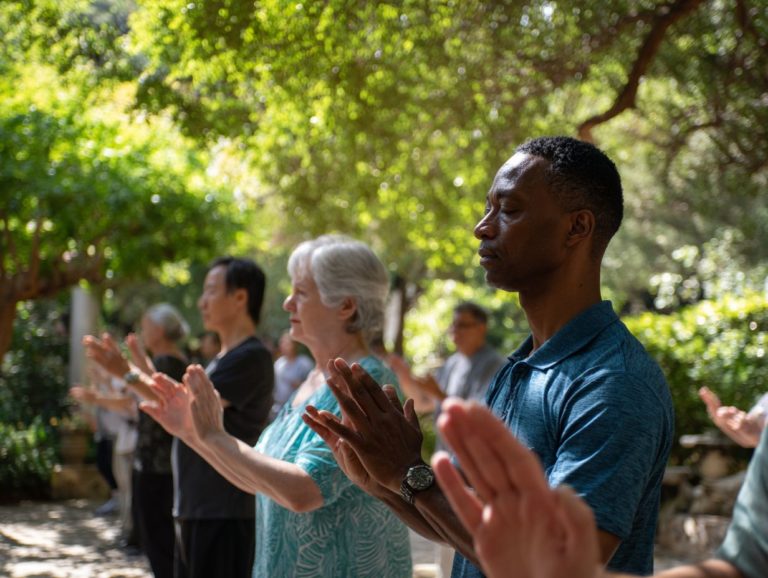How to Incorporate Meditation in Yoga: Comprehensive Guide
Contents
- 1 Introduction to Meditation in Yoga
- 2 Meditation and Yoga Statistics in the United States, 2022
- 3 # Learning About Different Meditation Techniques Meditation can take many forms, each with its own approach and benefits. Here are some common methods: ## Mindfulness Meditation This method involves paying attention to your thoughts and feelings without judgment. You focus on your breath and stay present in the moment. ## Transcendental Meditation In this technique, you repeat a specific sound or phrase (mantra) to calm your mind. This can help you achieve a peaceful state. ## Guided Meditation With this method, you listen to a narrator who guides you through the process. It often includes visualization exercises to promote relaxation. ## Loving-Kindness Meditation This practice encourages you to show kindness and compassion toward yourself and others. You silently wish well for yourself and those around you. ## Zen Meditation Also known as Zazen, this practice involves sitting in a specific posture and focusing on your breath. It emphasizes stillness and awareness. ## Body Scan Meditation In this technique, you focus on different parts of your body, noticing any sensations without trying to change them. This can help you relax and relieve tension. ### Summary By exploring these different meditation methods, you can find the one that works best for you and supports your well-being.
- 4 Preparing for Meditation in Yoga Practice
- 5 Incorporating Meditation into Yoga Sessions
- 6 Common Challenges and Solutions
- 7 Tips for Enhancing Your Practice
- 8 Exploring Advanced Techniques
- 9 Resources for Further Learning
- 10 Frequently Asked Questions
- 10.1 What is the importance of meditation in yoga according to the guide?
- 10.2 How can beginners start incorporating meditation into their yoga routine?
- 10.3 What techniques are recommended in the guide for effective meditation during yoga?
- 10.4 How does meditation affect the physical aspects of yoga practice?
- 10.5 What are some common challenges practitioners face when integrating meditation into yoga?
- 10.6 Can yoga meditation be adjusted for individual preferences?
Introduction to Meditation in Yoga

Meditation and yoga, two old practices that have been connected for a long time, provide significant benefits when used together. This guide explores the core of meditation in yoga, providing clear techniques and practical tips for bringing mindfulness into your practice.
Readers will learn about various forms of meditation, like mindfulness and loving-kindness, and how to create a comfortable space for meditation. The guide also covers typical problems that practitioners encounter and offers methods to improve their experience.
By the end of this article, readers will know how to include meditation in their yoga sessions, helping them connect more with their body and mind.
Key Takeaways:
- Adding meditation to yoga improves focus and emotional balance, helping you connect more deeply with your practice.
- Create a serene environment and choose optimal times for meditation to maximize focus and relaxation during your yoga sessions.
- Start by paying attention to your breathing, take a moment to meditate between poses, and finish with a session that improves your overall experience.
Definition of Meditation
It has roots in ancient traditions, particularly within Eastern philosophies such as Buddhism and Hinduism. The primary goals of meditation include achieving a state of inner peace and clarity.
Various forms exist, such as mindfulness, transcendental meditation, and loving-kindness, each offering unique approaches to mental training.
Many practitioners find that meditation complements yoga practice, as both emphasize the connection between mind and body while promoting relaxation and personal growth.
Benefits of Combining Meditation and Yoga
Research shows that regular practice can lead to significant stress reduction, evidenced by lower cortisol levels in practitioners. Some research by the American Psychological Association indicates that mindfulness meditation is a proven method to alleviate stress effectively.
Techniques such as breath control help improve focus, allowing individuals to remain present and attentive in their daily tasks.
People who practice meditation and yoga regularly often become better at handling their emotions, as seen in those who reduce their anxiety through these activities. This mix supports a healthy mind and body, encouraging good health and a calmer life.
Meditation and Yoga Statistics in the United States, 2022
Meditation and Yoga Statistics in the United States, 2022
Usage Statistics: Prevalence of Practices
Usage Statistics: Number of Users (in millions)
The Meditation and Yoga Statistics in the United States, 2022 give a clear summary of how common these wellness practices are among people in the United States. The data shows both the percentage of people participating in these activities and the total number of users, demonstrating the increasing interest in overall health methods.
According to the statistics, meditation stands as the most popular practice, with 18.3% of the population 60.53 million users
Yoga follows closely, with 16.8% of the population practicing it, translating to around 55.78 million users
Additionally, the practice of guided imagery and progressive relaxation is also noteworthy, with 6.7% of the population engaged in these techniques, which represents about 22.22 million users
- Meditation: 18.3% prevalence, approximately 60.53 million users.
- Yoga: 16.8% prevalence, approximately 55.78 million users.
- Guided Imagery/Progressive Relaxation: 6.7% prevalence, approximately 22.22 million users.
These statistics indicate a broad acceptance and normalization of meditation and yoga in American society, driven by an increasing recognition of their benefits for mental and physical health. As these practices become more common, more resources, classes, and programs are expected to appear to help people with their wellness goals. The data shows a cultural shift that emphasizes mental health and self-care, making meditation, yoga, and similar practices important parts of everyday life.
# Learning About Different Meditation Techniques Meditation can take many forms, each with its own approach and benefits. Here are some common methods: ## Mindfulness Meditation This method involves paying attention to your thoughts and feelings without judgment. You focus on your breath and stay present in the moment. ## Transcendental Meditation In this technique, you repeat a specific sound or phrase (mantra) to calm your mind. This can help you achieve a peaceful state. ## Guided Meditation With this method, you listen to a narrator who guides you through the process. It often includes visualization exercises to promote relaxation. ## Loving-Kindness Meditation This practice encourages you to show kindness and compassion toward yourself and others. You silently wish well for yourself and those around you. ## Zen Meditation Also known as Zazen, this practice involves sitting in a specific posture and focusing on your breath. It emphasizes stillness and awareness. ## Body Scan Meditation In this technique, you focus on different parts of your body, noticing any sensations without trying to change them. This can help you relax and relieve tension. ### Summary By exploring these different meditation methods, you can find the one that works best for you and supports your well-being.
Trying different meditation methods can help people choose what works best for their yoga practice and mental well-being. For instance, a study published by JAMA Network Open highlights the efficacy of Transcendental Meditation in reducing stress, suggesting that exploring various techniques can significantly enhance one’s meditation experience. Additionally, incorporating different approaches, such as yoga practices, can further support mental clarity and emotional balance.
Mindfulness Meditation
This practice has its roots in Buddhism, where it serves as a path to enlightenment. By focusing on the breath, practitioners can anchor themselves in the present, cultivating awareness of their surroundings and internal experiences.
Beginners are encouraged to start with short sessions, gradually extending their duration. Finding a quiet spot and sitting comfortably can improve the experience.
Regular practice helps people get to know their thoughts better, which can lower stress and improve emotional strength.
Guided Meditation
Many people find guided meditations on popular apps like Headspace and Insight Timer useful. These platforms provide different sessions designed for specific purposes, like relieving stress and helping with sleep.
Users can choose from various themes and lengths to match their preferences. For example, those struggling with anxiety may benefit from calming sessions, while others looking for better sleep can try nighttime meditations.
Choosing the right guided meditation can improve your well-being and encourage mindfulness in everyday activities.
Transcendental Meditation

Practitioners engage in this technique for 20 minutes, twice daily. This organized method helps people achieve deep relaxation, which greatly lowers stress and anxiety.
Research has shown that regular practice can lead to lower blood pressure and improved emotional well-being. By promoting better awareness and concentration, Transcendental Meditation improves the overall quality of life.
Many people say they feel more creative and perform better in everyday activities, making it a useful resource for self-improvement and mental well-being.
Loving-Kindness Meditation
This technique involves repeating phrases of goodwill, such as ‘May I be happy’ and ‘May you be safe.’ Practitioners start by directing these sentiments toward themselves before extending them to loved ones, acquaintances, and even those with whom they have conflicts.
This slow growth builds empathy and emotional ties. The practice can lead to reduced stress and increased feelings of well-being.
By practicing kindness, people often gain clearer awareness of their own feelings and the feelings of others.
Preparing for Meditation in Yoga Practice
Getting ready for meditation during your yoga routine means setting up a physical and mental space that helps you relax deeply and concentrate.
Creating a Peaceful Environment
Choosing a quiet location is the first step. This space should be free from noise and interruptions. Soft lighting can improve the mood, making the space feel more relaxing.
Using calming scents like lavender can help you relax. Background sounds, like gentle nature melodies, can also help mask any remaining distractions.
By carefully placing these items, people can create a welcoming space that helps them focus during meditation, leading to better concentration and a more rewarding experience.
Choosing the Right Time
Many individuals find that morning sessions help set a positive tone for the day, as the mind is often clearer and less distracted. Others may prefer evening meditation to unwind and reflect on the day’s events.
No matter when you choose, sticking to a routine is essential. Setting a routine, either every day or a few times a week, helps build a strong habit. Paying attention to your energy levels can improve your meditation experience.
Incorporating Meditation into Yoga Sessions
Including meditation in your yoga sessions can improve your experience, providing greater physical and mental benefits. To understand these advantages in depth, explore our holistic health benefits of yoga.
Starting with Breath Awareness
Practitioners can start by finding a comfortable seated position, closing their eyes, and bringing attention to their breath.
Concentrating on the natural flow of breathing in and out helps create a feeling of being present. As they breathe, helping them notice feelings in their body deepens their awareness of the present.
This practice helps relax the mind and makes it easier to move into physical positions. Practitioners can improve their awareness and strengthen their yoga practice by concentrating on their breath.
Using Meditation Between Asanas
These short breaks can involve methods like body scanning, where people focus on each part of their body, helping them notice their physical feelings more clearly.
Another effective method is reflecting on the emotional and physical sensations experienced during the previous pose. This practice promotes awareness and can improve the overall yoga experience.
By using these techniques, practitioners can build a stronger connection to their body and mind, resulting in better focus and clearer thoughts during their session.
Ending with a Meditation Session
To lead an effective closing meditation, a teacher may encourage participants to focus on their breath, allowing each inhalation and exhalation to promote relaxation.
Visualization techniques can improve this experience; participants may picture a calm environment or feel a gentle light surrounding them.
Practicing gratitude helps people feel more at peace, encouraging them to think about what they value from their experience.
These techniques create a feeling of peace and connection, helping people move from yoga to everyday life in a smooth and aware way.
Common Challenges and Solutions

Many people face similar difficulties when meditating, but knowing these issues can help you get past them. For example, if you’re struggling, you might find helpful tips in an article by Headspace, which addresses 17 common issues you might encounter while meditating.
Difficulty in Focusing
To tackle this issue, people can use methods that improve focus. One effective approach is to use a mantra, repeating a simple phrase to anchor the mind.
Looking into guided meditation resources can offer organization and help during sessions. Setting realistic time limits for practice is also essential; starting with just a few minutes can help build consistency without overwhelming the individual.
By gradually increasing the duration, one can develop a stronger focus and deepen their meditation experience.
Physical Discomfort
Proper posture is essential for a successful meditation experience. Maintaining an aligned spine allows for deeper breathing and greater focus.
Practitioners often benefit from using props such as cushions or blocks to support their bodies. These tools can improve comfort and stability, helping people to focus on their practice.
It is also important to recognize personal limits; forcing a position can lead to strain. Paying attention to your body and making changes when necessary leads to a better and more effective meditation session.
Tips for Enhancing Your Practice
Enhancing your meditation practice needs regular effort and careful changes to your method. Incorporating practices like yoga can significantly improve your focus and mindfulness, as detailed in our overview of the holistic health benefits of yoga.
Setting Intentions
Techniques such as journaling or visualization can effectively shape the meditation outcome.
Journaling allows individuals to articulate their thoughts and feelings, providing clarity on what they hope to achieve. Visualization, on the other hand, helps in mentally picturing the desired state of calm or focus.
By using these practices, you can build a stronger connection to your goals, which helps you stay focused during meditation. This preparation improves focus and makes the meditation session more effective.
Using Props for Comfort
Meditation cushions, supports, and blankets can greatly improve your practice.
A meditation cushion helps maintain proper posture, reducing strain on the hips and lower back. Bolsters provide added support for the spine, helping to maintain proper alignment and comfort while sitting during meditation.
Meanwhile, a warm blanket can help practitioners feel comfortable, allowing them to concentrate better on their thoughts. By integrating these props, individuals may find that they can meditate more effectively, enjoying deeper relaxation and increased mindfulness throughout their practice.
Exploring Advanced Techniques
As people practice meditation more, trying out new techniques can offer helpful ideas and support personal development.
Chakra Meditation
Practitioners begin by finding a quiet space and sitting comfortably. They visualize each chakra, starting from the root at the base of the spine and moving upward to the crown.
For each energy center, they can use specific colors and affirmations. For example, you can imagine the root chakra as a bright red color, along with the phrase, “I feel secure and grounded.”
This process improves mental clarity and supports emotional stability, resulting in overall well-being.
Mantra Meditation
To select a useful mantra, individuals should pick a phrase that resonates with them, such as “I am calm” or “Peace within.” These simple mantras serve as aids during meditation.
To use a mantra effectively, practitioners can repeat it silently or aloud, allowing it to draw attention away from distractions. This practice improves clear thinking and concentration, helping you deal with stress and anxiety more effectively.
Regular use of mantras can lead to a more centered and peaceful state of mind.
Resources for Further Learning

For anyone who wants to learn more about meditation in yoga, there are many resources available to help with continued education.
Books on Meditation and Yoga
Books such as ‘The Heart of Yoga’ by T.K.V. Desikachar offer helpful information about the fundamentals and practice of yoga. This book highlights the value of personal practice, making it a useful guide for practitioners of all skill levels.
Similarly, ‘The Miracle of Mindfulness’ by Thich Nhat Hanh offers practical techniques for incorporating mindfulness into daily life, enhancing meditation experiences.
Both texts help readers grasp the ideas better and build a stronger connection to the practices, leading to more peace and self-awareness.
Online Courses and Workshops
Platforms such as Udemy and Coursera offer structured courses that cater to various skill levels.
Users can take advantage of special features like community interaction, allowing learners to share their experiences and knowledge. Many of these courses offer a certificate when finished, which can improve your credibility and job prospects.
This increase in online resources enables people to learn meditation and yoga whenever they want, making wellness easier to access than ever.
Recap of Key Points
This mix improves focus, lowers stress, and helps you connect better with yourself.
By meditating, people usually notice that they can focus better during yoga classes, allowing them to engage more fully with the poses. The calm developed through meditation carries into daily life, helping to improve emotional stability and strength in common situations.
As people use this complete approach, they may feel calmer and healthier, which can improve their overall quality of life.
Encouragement to Practice Regularly
Taking regular time for these activities helps people develop mindfulness and improve their overall health.
As consistency builds, practitioners often notice improvements in focus, stress management, and emotional resilience. Over time, the benefits extend beyond the mat or meditation cushion, positively influencing daily life.
Sticking to a routine strengthens your skills and brings a sense of calm and clarity. This process of self-exploration and change benefits those who focus on their health by participating regularly.
Frequently Asked Questions
What is the importance of meditation in yoga according to the guide?
The guide on ‘How to Add Meditation in Yoga: Complete Guide’ shows that meditation improves yoga by increasing mental clarity, emotional balance, and a stronger connection to the body. It helps teachers build mindfulness, which can improve their yoga practice.
How can beginners start incorporating meditation into their yoga routine?
Beginners can start incorporating meditation into their yoga routine by setting aside a few minutes before or after their yoga session. The ‘How to Include Meditation in Yoga: Simple Guide’ recommends beginning with basic breathing exercises and slowly extending the time spent meditating as you feel more at ease.
What techniques are recommended in the guide for effective meditation during yoga?
The guide suggests different methods like paying attention to your breathing, following guided meditation sessions, and using mental imagery. These methods improve the meditation experience and make it easier to include in yoga practice as explained in the ‘How to Include Meditation in Yoga: Complete Guide.’
How does meditation affect the physical aspects of yoga practice?
Meditation positively affects the physical aspects of yoga practice by enhancing concentration and body awareness. According to the ‘How to Include Meditation in Yoga: Complete Guide,’ being more aware can improve your posture, balance, and overall ability in yoga poses.
What are some common challenges practitioners face when integrating meditation into yoga?
Practitioners may face challenges such as a wandering mind, difficulty in finding quiet space, and impatience with the process. The ‘How to Add Meditation in Yoga: Simple Guide’ offers tips to handle these issues, like setting achievable goals and making a specific area for meditation.
Can yoga meditation be adjusted for individual preferences?
Yes, the ‘How to Include Meditation in Yoga: Complete Guide’ says that meditation can and should be adjusted to fit personal needs. Practitioners should try various meditation styles and techniques to discover what works best for them, leading to a more enjoyable and personalized yoga experience.

Sheetal Sharda has a background in CS. She got an interest in Holistic living back in 2018, and has since started exploring more into Naturapathy, Holistic Living, Yoga, and more. She got inspired to start SereneClinics to help people find reliable centers across the world.
